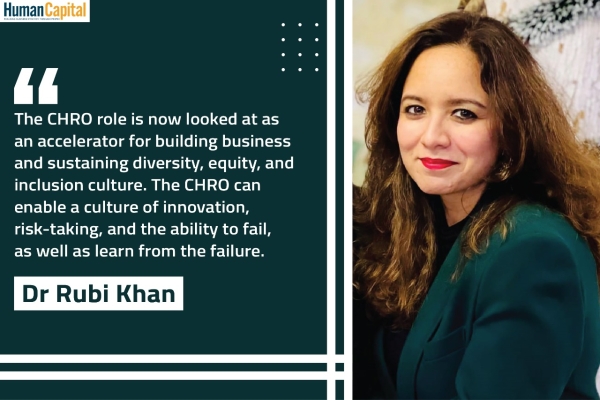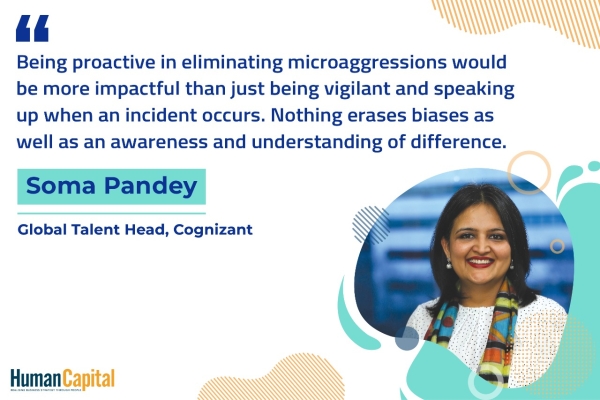
Best Practices in Employee and Industrial Relations - What Leaders Say?
The term 'employee relations' denotes an organization’s efforts to manage relationships between employers and employees. An organization with good employee relations practices focuses on fair and consistent treatment to all employees to improve commitment and engagement.
Employee behaviour gives a clear indication about the next wave of not only technological but also required social change. A company that has its eyes open to these changes can involve the same employees in innovations about the product or service that the organization offers, and also the organizational culture. When a company treats its employees as an integral part of its operations, it will certainly help in employees feeling connected to the organization and its ethos.
While there are multiple reforms taking place in the organisations’ art of employee relations, engagement and experience, this article highlights the secret sauce of success. Many books have been written on Human Resource best practices, but very few, if any have focussed on differentiating practices in the Employee Relations space, specifically for associates on the shop floor.
The advent of technology impacts the empowerment of people across the organisation hierarchy. The wave of automation, digitisation and industry 4.0 across different industries compels us to understand how the conventional matrix of employee relations is changing. Industrial hubs like Pune have been attracting a steady stream of multi-national companies which brings new aspects of industrial and employee relations with them. The goal is to create a ‘multiplier force’ by enabling more organisations to learn and implement best practices in their organisations.
Thoughtful HR/IR leaders of some of the notable companies in Pune were interviewed in depth to understand the best and innovative IR&ER practices they follow in their respective organizations.
Five key insights were generated and are described as follows:
1. “It’s often not the what, but the how - which matters”: This statement was quoted by the head of HR for Tata motors. In essence all the leaders that we spoke with mentioned that the way in which the practice was deployed mattered to the employees. Making the employee feel wanted and valued was critical to the success of the initiative.
Take for instance the Man of the month award which Tata motors give its employees, the recipient of the award is introduced and given the award by a friend, who introduces the person in a very personal way. This makes the event very touching and truly engages the employee.
In Lupin, the employees are rewarded with stock options across all grades based on their performance. This is in addition to the recognition of individuals and groups for their achievements in 6-monthly townhalls.
IBM does not have an attendance system and provides unlimited sick leave as a reflection of Trust of its employees.
In Cummins, lot of initiatives have been taken especially for women employees such as young mother programs, nutrition and food habits, yoga and meditation centres, etc.
The promotion at Marriott is completely merit-based. The process is designed around a robust Balanced Scorecard methodology. Performance management for managers is done on a real-time basis with an app that facilitates communication between the manager and the General Manager for dynamic feedback.
2. ER Philosophy: Having a strong philosophy in place which guided the actions of ER management was considered important. Empowering and educating employees was seen as an essential component of mapping their learning into the philosophical foundations of the organisation.
In Lupin employees are treated as partners in progress who are encouraged to generate new ideas, explore fresh avenues and offer solutions that add exceptional value.
Cummins is a value-based organisation, therefore, ensures that every individual undergoes the training program including the contract labourers. The training focuses on diversity, ethics, prevention of sexual harassment, IT/ technology training and safety.
SKF offers customised career paths to employees in the form of a Team Leader / Circle Leader model. It is based on skill levels and the selection process is designed on behavioural situations. The trained employees get the opportunity to choose and grow in these customised roles in the organisation thus taking up positions like skill trainer, SME etc.
Marriott believes in ensuring the satisfaction and happiness of its employees because they believe that happy employees will provide good service to customers.
In STL with the help of the on-boarding process called “Aarambh” new employees are inducted in a structured manner. In addition, they also have a Buddy program for all new joinees which helps the employees assimilate with the culture of the organisation.
3. Great firms invest in their employees: This perspective was in continuation of the building on the philosophical foundation. The function of learning and development interventions was an important key in managing the engagement. This meant creating a forum for innovation and tapping into ideas, allowing them to flourish and be rewarded appropriately.
Through training and development interventions organisations create opportunities for employees to grow. IBM provides training on digital tools. Thermax has tied up with technical institutes like Gujarat Technical University to deliver programs.
Lupin has tied up with S P Jain, Mumbai for their sales and marketing personnel, BITS Pilani for manufacturing and with Symbiosis International University and Manipal University for research and PhD programmes.
Cummins has tied up with institutions such as TISS for industrial relations programs and BITS Pilani for technical aspects. Cummins also provides tuition fee waiver for higher education for relevant programs from predetermined recognised institutions across India.
4. STL is committed to career growth and upward mobility of employees. In this year alone job rotations are at 30%.Investing in the future is more important than getting things right today: Industry 4.0 will require companies to build a future ready workforce. Most of the leading organisations today focus on preparing their employees in terms of knowledge, skills and attitudes for the dynamic future, since employees will drive the success achieved by organisations.
Lupin does this through a unique program of providing further education, including lodging and boarding to 12th pass-outs across the country. On graduation, they receive their degree in a graduation ceremony and are offered a full-time role at Lupin. Along with this, research department’s “Eureka” and the manufacturing department’s “Idea Factory” are forums for employees to think of the next innovation. These innovations are audited by the finance team and appear on the open-to-all internal knowledge management portal.
To ensure steady availability of quality talent, SKF recruits trainees through a rigorous development process with continuous performance review. Trainees successfully completing the process become eligible to go through the selection process for full-time employment.
Cummins is moving from manual training to Automotive and AI based training to upskill employees.
STL has a skill-matrix based approach that allows a quarterly assessment and upgradation of skills on the shop-floor.
Thermax has a program called AIM (All Initiatives Matters). It is a portal where any employee can go and submit his idea and there is a governance mechanism in place. Lots of good ideas come out of it. Suggestion schemes and boxes are employed to handle grievances for blue-collared workforce.
5. Collaboration is the key: Driving trust and the ability to confide are important considerations for good team working. Providing the right formal or informal platform to enable creative venting, critical discussions and opportunities to participate in decision making builds a collaborative workplace. Such activities drive engagement and ownership which is essential for sustained growth.
In Lupin ‘Next Levels’ is a forum provided to employees to have meetings with their skip-level managers to voice out concerns and/or issues but with complete confidentiality.
In SKF a two-day workshop is organised in which the management and union together discuss the future trends w.r.t the industry and the company. The company also has monthly union meetings to discuss the business and how it may affect the workers and SKF. Infact at SKF there is an Open Door Policy and whenever any issue arises, the concerned parties can come and get it resolved.
Tata Motors uses a plethora of ways to drive excellence in the workplace. An initiative in this space is called DIFTR (Do It First Time Right). It is designed for blue-collared workers on the shop floor where critical activities are focused upon and specific training and evaluation parameters are identified to DIFTR.

Anjali Byce is Chief Human Resource Officer at Sterlite Technologies Limited. Her thrust has been in driving change through multiple Business transformation programs, implementation of a culture based HR Strategy, capability building, Six Sigma and diversity initiatives to name only a few.

Dr. Pratima Sheorey is Professor and Director at SCMHRD. She has an MBA in Marketing from the University of Pune and a Ph D from Symbiosis International University. She has more than 19 years of experience in the academic and corporate sector and has worked with ORG-MARG (now AC Nielsen), the Hero Group, Symbiosis International University (SIU) etc.. Dr. Pratima has trained executives in many organizations in India and abroad in various behavioural and functional programmes like Service Orientation, Selling Skills, Creativity and Innovation etc. across all levels.
Are you comfortable working with dispersed colleagues?
Trending
-
SBI General Insurance Launches Digital Health Campaign
-
CredR Rolls Out 'Life Happens' Leave For Its Employees
-
Meesho Announces 30-Week Gender-Neutral Parental Leave Policy
-
Microsoft Unveils Tech Resilience Curriculum To Foster An Inclusive Future
-
60% Indian Professionals Looking For Job Change Due To COVID: Survey
-
SpringPeople And Siemens Collaborate For Digital Transformation Push
-
86% Professionals Believe Hybrid Work Is Essential For Work Life Balance: Report
-
Almost 1 In Every 3 People's Personal Life Affected Due To Work Stress
-
Meesho Rolls Out Reset And Recharge Policy For Employees
-
80% Of Talent Leaders & Academics Say Pandemic Changed Skill Needs For Youth: Report
-
Hero Electric Rolls Out 'Hero Care' Program For Employees
-
Human Capital In Collaboration With ASSOCHAM Hosts Virtual Conference
-
IKEA India, Tata STRIVE Collaborate To Create Employability And Entrepreneurship Opportunities
-
SAP India, Microsoft Launch Tech Skilling Program for Young Women
-
DXC Technology, NASSCOM Collaborate For Employability Skills Program
-
Lenskart To Hire Over 2000 Employees Across India By 2022
-
Mindtree Launches Learn-and-Earn Program
-
Tata AIA Extends 'Raksha Ka Teeka' To Its Employees
-
Swadesh Behera Is The New CPO Of Titan
-
NetConnect Global Plans To Recruit 5000 Tech Professionals In India
-
Hubhopper Plans To Hire 60% Of Indian Podcasters By 2022
-
Corporate India Needs More Women In Leadership Roles: Report
-
Aon to Invest $30 Million and Create 10,000 Apprenticeships by 2030
-
Tech Mahindra Launches ‘Gift a Career’ Initiative for Upskilling of Youth
-
40% Women Prefer Flexible Working Options in Post-COVID World: Survey
-
3 out of 4 companies believe they can effectively hire employees virtually: Report
-
Vodafone , CGI and NASSCOM Foundation launch digital skills platform
-
Odisha: Bank, postal employees to deliver cash for elderly, differently-abled persons
-
Skill India launches AI-based digital platform for "Skilled Workforce"
-
Hiring activity declines 6.73% in first quarter: Survey
-
70% startups impacted by COVID-19 pandemic
-
Bajaj Allianz Life ropes in Santanu Banerjee as CHRO
-
Over 70 Percent MSMEs look at cutting jobs to sustain businesses
-
93 Per Cent employees stressed about returning to office post-lockdown
-
Johnson & Johnson India announces family benefits for same gender partners
-
Indian firms turning friendly towards working mothers
-
Welspun India names Rajendra Mehta as new CHRO
-
Wipro partners with NASSCOM to launch Future Skills platform



Human Capital is niche media organisation for HR and Corporate. Our aim is to create an outstanding user experience for all our clients, readers, employers and employees through inspiring, industry-leading content pieces in the form of case studies, analysis, expert reports, authored articles and blogs. We cover topics such as talent acquisition, learning and development, diversity and inclusion, leadership, compensation, recruitment and many more.
Subscribe Now











































Comment